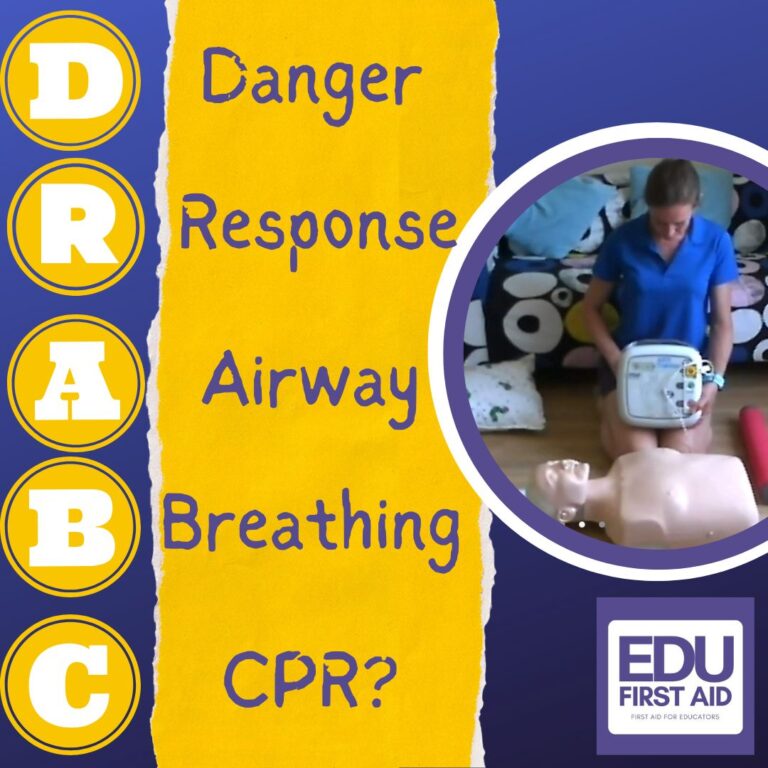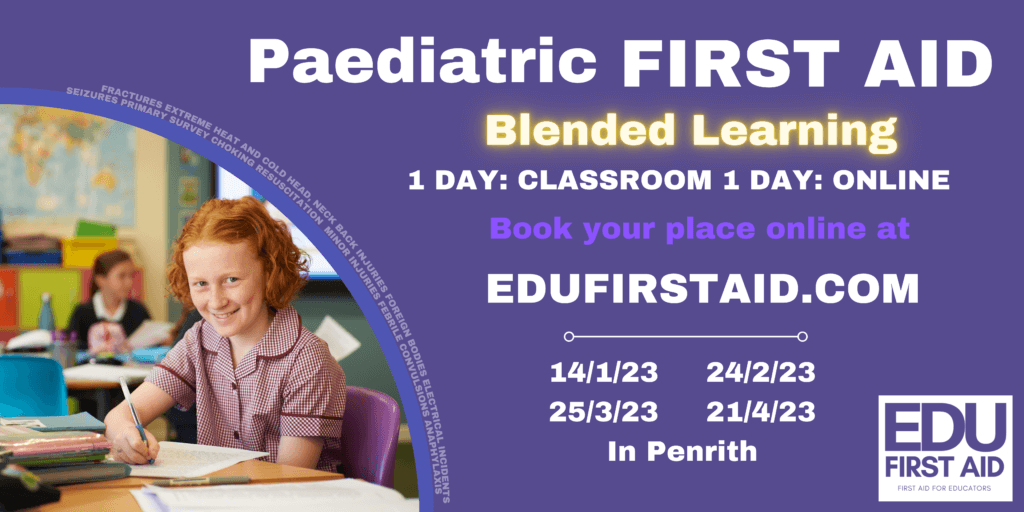DR ABC is the menmonic we teach in first aid, to help us get things in the order of priority. EDU First Aid includes DR ABC in every course, and it’s so simple to remember and helpful to keep the main thing the main thing.

By following the DR ABC steps, first aiders trained by EDU First Aid can prioritize their actions and provide the most effective care in a crisis situation.
The acronym “DR ABC” stands for Danger, Response, Airway, Breathing, and Circulation.
These are the five key steps that should be followed in any first aid situation.
- First and foremost, it is important to assess if there are any present dangers to you, or the casualty. Take any necessary precautions to ensure the safety of both the casualty and yourself. This may include moving them to a safer location, calling for help, or using protective equipment, like gloves.
- Once the danger has been assessed and addressed, the next step is to check for a response from the victim. This involves tapping the victim gently on the shoulder and asking if they can hear you. If there is no response, the first responder should assume that the victim is unresponsive and proceed to the next step.
- The airway is the next priority, as it is essential for the casualty to be able to breathe. The first aider should firstly check there is nothing in the casualty’s mouth, and if there is, roll them on to their side to clear the airway. Then, gently tilt the victim’s head back and lift their chin forwards and up to open the airway.
- Once the airway is open, we can now check for breathing. Look, listen and feel for breath for no more than 10 seconds to establish if they are breathing. If the casualty is not breathing, the first aider should begin CPR, and call 999.
- If the casualty isn’t breathing, the C stands for CPR. The first aider should continue CPR until emergency medical services arrive.
By following the DR ABC method, first responders can quickly and effectively assess and treat the most life threatening situation. This can mean the difference between life and death in a crisis situation, which is why it is so important for everyone who is trained in first aid by EDU First Aid to be competent in CPR.


